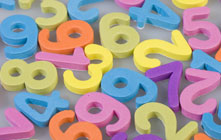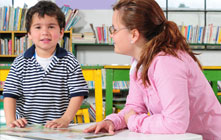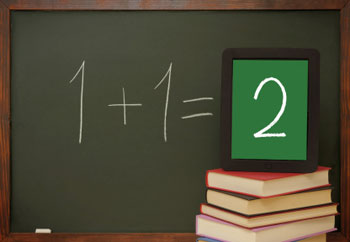Math Games: Fun Ways to Learn to Use Money
In general, working with money is introduced in 2nd grade; however, the study of money typically continues in 7th grade when students learn to calculate interest rates and taxes. To give your child a strong foundation early on, try these tips and games at home.

How to Practice Using Money Outside School
In 2nd grade, students usually learn to count money, including dollar bills and cents. One way you can practice at home is to give your child various combinations of change, like dimes, nickels and pennies, and have him or her count them. Repeated practice will make the process seem natural to your child, and he or she will become more comfortable handling money.
Counting money is a practical skill that your child can appreciate applying to real-world situations. When you're at the store, have your child pay the cashier. You can help him or her count out the exact payment or, alternatively, figure out how much money he or she should get back in change.
You also can reinforce these skills if you order food to be delivered. Depending on the age of your child, this can be an opportunity to practice calculating a tip. Though this is too advanced for a 2nd grader, it would be appropriate if your child is learning to multiply using decimals.
Money Games
Marketplace
Your child can develop a product, like bracelets, cookies or lemonade, and sell it to family members and neighbors. Your child will learn about handling money and making a profit. For instance, if the materials for a bracelet cost three dollars, and your child is selling them for $3, he or she won't make a profit.
Saving Up
Help your child set a purchasing goal, and then have him or her do chores around the house to earn an allowance. You might even help your child create a chart to figure out how long it will take to save enough money for what he or she wants to buy. This can increase your child's interest in working with money, as well as his or her motivation to earn it.
Matching Game
Help your 2nd grader practice counting coins by matching up equivalent amounts of money. On one side of the table, place 15 pennies. On the other side, place a dime and a nickel. Repeat this process for a few more combinations of coins. Then, have your child figure out which values on the left side match with which values on the right side.
Other Articles You May Be Interested In
-
Homework Help for Elementary School Math

Children often struggle to master concepts such as addition and subtraction, multiplication and division, fractions, and math involving time and money. Read this article to learn how you can help your elementary school aged children minimize their homework hassles.
-
MIND Games Lead to Math Gains

Imagine a math teaching tool so effective that it need only be employed twice per week for less than an hour to result in huge proficiency gains. Impossible, you say? Not so...and MIND Research Institute has the virtual penguin to prove it.
We Found 7 Tutors You Might Be Interested In
Huntington Learning

- What Huntington Learning offers:
- Online and in-center tutoring
- One on one tutoring
- Every Huntington tutor is certified and trained extensively on the most effective teaching methods
K12

- What K12 offers:
- Online tutoring
- Has a strong and effective partnership with public and private schools
- AdvancED-accredited corporation meeting the highest standards of educational management
Kaplan Kids

- What Kaplan Kids offers:
- Online tutoring
- Customized learning plans
- Real-Time Progress Reports track your child's progress
Kumon

- What Kumon offers:
- In-center tutoring
- Individualized programs for your child
- Helps your child develop the skills and study habits needed to improve their academic performance
Sylvan Learning

- What Sylvan Learning offers:
- Online and in-center tutoring
- Sylvan tutors are certified teachers who provide personalized instruction
- Regular assessment and progress reports
Tutor Doctor

- What Tutor Doctor offers:
- In-Home tutoring
- One on one attention by the tutor
- Develops personlized programs by working with your child's existing homework
TutorVista

- What TutorVista offers:
- Online tutoring
- Student works one-on-one with a professional tutor
- Using the virtual whiteboard workspace to share problems, solutions and explanations